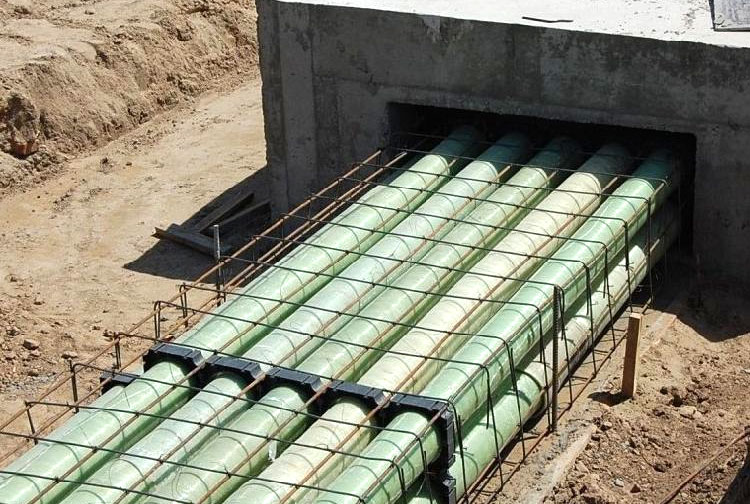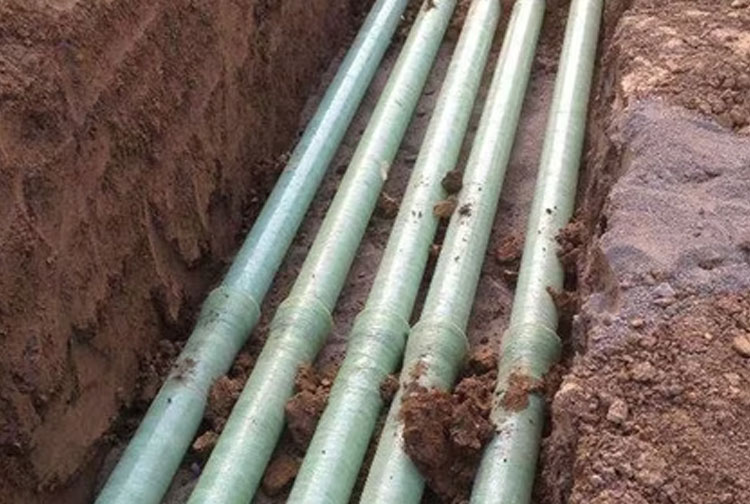Caption: GRP pipes ensure corrosion-free water delivery.
Introduction: The Piping Revolution Begins
Pipelines are the arteries of industries—water supply, oil transport, chemical processing—all rely on them. Yet, corrosion has plagued traditional piping materials like steel and iron, shortening lifespans and driving up costs. Enter GRP pipes, a game-changing solution that promises corrosion-free performance. But what does GRP stand for? The full form of GRP pipe is Glass Reinforced Plastic pipe, a composite marvel that’s redefining durability in modern piping systems. This article explores why GRP’s full form is more than an acronym—it’s the key to unlocking corrosion-free piping.
From industrial plants to municipal water networks, GRP pipes are proving their worth. Lightweight, strong, and impervious to rust, they’re challenging the status quo and offering a smarter alternative. Whether you’re an engineer, contractor, or industry professional, understanding the GRP pipe full form and its benefits could transform your next project. Let’s dive into the details and see why Glass Reinforced Plastic is the future of piping.
What Is the Full Form of GRP Pipe?
GRP stands for Glass Reinforced Plastic. At its core, a GRP pipe is a composite made of a plastic resin matrix—typically polyester, vinyl ester, or epoxy—reinforced with glass fibers. These fibers provide strength and stiffness, while the resin binds them into a cohesive, durable pipe. The result is a material that combines the flexibility of plastic with the toughness of glass, tailored for piping applications.
Knowing the full form of GRP pipe—Glass Reinforced Plastic—unlocks its essence: a lightweight, corrosion-resistant alternative to metal pipes. Unlike steel or iron, GRP doesn’t rely on coatings to fight rust—it’s inherently immune. This makes it a standout choice for environments where corrosion is a constant threat. So, why is it the key to corrosion-free piping? Let’s break it down.
Why GRP Pipes Are the Key to Corrosion-Free Piping
Corrosion isn’t just an annoyance—it’s a costly, dangerous problem. Traditional metal pipes degrade over time, leading to leaks, bursts, and expensive repairs. GRP pipes, with their Glass Reinforced Plastic composition, tackle this head-on. Here’s why they’re the ultimate solution:
1. Unmatched Corrosion Resistance
Steel and iron pipes rust when exposed to water, salt, or acids—a fact of life in coastal areas, wastewater systems, or chemical plants. Once corrosion sets in, it’s a downhill slide: pipes weaken, crack, and fail, often within 20-30 years. GRP pipes rewrite this story. Being non-metallic, Glass Reinforced Plastic doesn’t corrode, even in the harshest conditions.
Studies show GRP pipes can last 50-100 years in aggressive environments—think seawater or acidic soils—without losing integrity. A steel pipeline might need replacement in decades, while a GRP system keeps flowing. This corrosion resistance is the cornerstone of why the GRP pipe full form matters—it’s the key to piping that lasts.
Caption: GRP pipes thrive where metal pipes rust away.
2. Lightweight Design for Easy Handling
Weight is a big deal in piping. Steel pipes are heavy—around 10-15 pounds per foot—requiring cranes, trucks, and large crews to install. GRP pipes are a fraction of that, weighing just 1-2 pounds per foot thanks to their Glass Reinforced Plastic makeup. This lightweight nature slashes transportation costs and simplifies installation, especially in remote or tight spaces.
Imagine laying a water line in a rugged terrain—GRP pipes can be carried by hand or small equipment, while steel demands heavy machinery. This efficiency makes GRP a practical choice for corrosion-free piping in any setting.
3. Strength Without Sacrifice
Don’t let the “plastic” in Glass Reinforced Plastic fool you—GRP pipes are tough. Their glass fibers deliver tensile strength up to 70,000-100,000 psi, rivaling or exceeding steel’s 50,000-70,000 psi. This means they can handle high-pressure fluids—water, oil, or chemicals—without cracking or deforming.
Unlike steel, which is strong but brittle under certain stresses, GRP offers flexibility, reducing the risk of brittle failure. For pipelines needing both durability and corrosion resistance, GRP’s strength is a winning trait.
GRP Pipes vs. Traditional Materials: The Stats
How does GRP stack up against steel and other piping staples? Here’s a head-to-head comparison:
| Property | GRP Pipe | Steel Pipe | PVC Pipe |
|---|---|---|---|
| Corrosion Resistance | Excellent | Poor (rusts) | Good |
| Weight | Light (1-2 lbs/ft) | Heavy (10-15 lbs/ft) | Light (1-3 lbs/ft) |
| Tensile Strength | High (70,000-100,000 psi) | Good (50,000-70,000 psi) | Low (7,000-10,000 psi) |
| Lifespan | 50-100 years | 20-50 years | 20-50 years |
| Maintenance | Low | High | Low |
Note: Values vary by specific formulations and conditions.
GRP pipes dominate in corrosion resistance, lifespan, and strength, outclassing steel and even PVC in demanding applications. Steel’s weight and rust issues drag it down, while GRP’s full form shines as the key to corrosion-free piping.
Real-World Applications: GRP Pipes in Action
The full form of GRP pipe—Glass Reinforced Plastic—comes to life in real-world uses:
- Water Supply: GRP pipes deliver clean water without rust contamination.
- Wastewater: Corrosion resistance handles sewage and chemicals effortlessly.
- Oil and Gas: GRP withstands harsh fluids in pipelines.
- Marine: Seawater systems rely on GRP’s durability.
Take a coastal desalination plant: steel pipes might corrode in years, while GRP pipes keep flowing for decades. This real-world proof shows why GRP is the key to corrosion-free piping.
Cost Benefits: Beyond the Initial Price
Steel pipes might seem cheaper—$10-$20 per foot vs. GRP’s $15-$30—but the numbers shift over time. Steel’s rust means coatings, repairs, or replacements, costing $50-$100 per section annually in harsh conditions. GRP pipes, with their low maintenance and long life, cut lifecycle costs by 20-40%. Add easier installation due to their weight, and GRP’s value becomes clear.
Environmental Advantage: A Sustainable Choice
Sustainability adds another layer. Steel production is carbon-intensive, while GRP’s durability reduces replacement frequency, lowering waste. Though resin production has an environmental footprint, advancements in recycled glass fibers make GRP a greener option for corrosion-free piping.
Limitations: Where GRP Faces Challenges
GRP isn’t perfect. Its higher upfront cost can deter small projects, and it’s less suited for extreme high-temperature fluids (above 200°C) without special resins. Steel holds an edge in raw compressive strength, but for most piping needs, GRP’s corrosion resistance outweighs these drawbacks.
Conclusion: GRP’s Full Form Unlocks the Future
The full form of GRP pipe—Glass Reinforced Plastic—isn’t just a name; it’s the key to corrosion-free piping. With unmatched resistance to rust, lightweight strength, and long-term savings, GRP pipes outshine steel and other materials in modern applications. From water systems to industrial lines, they deliver durability where others fail.
Why does it matter? Because in a world where corrosion costs billions, GRP offers a smarter, longer-lasting solution. Ready to upgrade your piping? Explore how Glass Reinforced Plastic can keep your systems flowing—corrosion-free—for generations.
 +86 15303735673
+86 15303735673 Jessica@frpzs.com
Jessica@frpzs.com
 Technical Data
Technical Data













